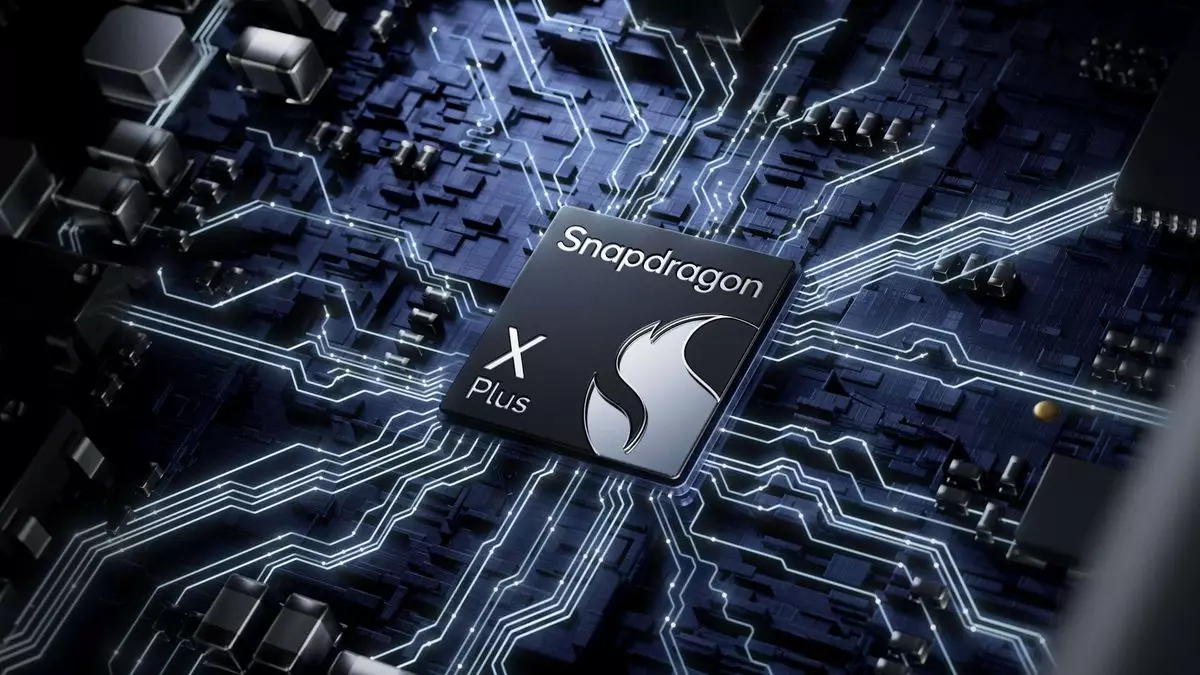The world of technology is often filled with rumors and speculation, particularly regarding potential mergers and acquisitions. Recently, media outlets like Reuters, The Wall Street Journal, and CNBC have reported that Qualcomm is exploring the possibility of acquiring Intel’s chip design business. Despite the tantalizing nature of such a storyline, a close analysis of the situation reveals that this acquisition is improbably feasible. This article dissects the motivations behind Qualcomm’s interest in Intel, the challenges posed by such a takeover, and the broader implications for the semiconductor industry.
The Rationale Behind Qualcomm’s Ambition
At the heart of Qualcomm’s potential pursuit of Intel lies a strategic desire to expand its own capabilities within the semiconductor market. While Qualcomm is famed for its Snapdragon processors that power a multitude of mobile devices, the company finds itself at a crossroads. It would benefit from diversifying its product offerings and gaining access to the x86 architecture, which underpins most desktop and server CPUs today.
Qualcomm’s core products are based on ARM architecture, which often necessitates software emulation for compatibility with Windows applications—a limitation that hinders usability. By acquiring Intel, Qualcomm could theoretically sidestep these challenges and produce its own x86 chips. This would enable Qualcomm to compete more effectively in a segment where Intel has long been a dominant player. The desire for licenses related to the x86 architecture may be a significant motivator behind Qualcomm’s interest, as owning such licenses could shield Qualcomm from future licensing rate increases or restrictions imposed by Intel.
Though Qualcomm might be motivated to pursue Intel, financial realities complicate this aspiration. Qualcomm’s market capitalization currently surpasses that of Intel, yet its revenue and operating income do not avoid the comparative scrutiny. The financial outlay necessary for a full acquisition of Intel would be daunting, even for a company boasting a sizable cash reserve. It begs the question: is Qualcomm truly positioned to undertake such a colossal investment?
Moreover, the semiconductor market is characterized by high barriers to entry, fierce competition, and strict regulatory landscapes. Although Qualcomm has displayed an ability to generate significant revenues within its core markets, the reality of acquiring an enormous entity like Intel, which operates across multiple sectors of the semiconductor business, presents severe obstacles.
Even if Qualcomm’s ambitions were financially supported, several regulatory obstacles could thwart any merger attempt. The United States and global governing bodies are wary of monopolistic practices that could arise from such a merger, and prior examples abound—such as Nvidia’s failed attempt to acquire Arm. Given that Intel holds critical market share in both client and server CPU sectors, and Nvidia’s experience demonstrates the challenges of navigating antitrust scrutiny, any Qualcomm-Intel merger would likely face similar opposition.
The ramifications of a merger would not only concern market competition, but also innovation and consumer choice. Antitrust regulators are increasingly vigilant about mergers that might stifle competition or lead to monopolistic control over critical technologies. Thus, even if Qualcomm and Intel were to reach an agreement, the path through regulatory processes could become a lengthy and arduous battle dotted with setbacks and potential denials.
With all this analysis, one must ask: what has prompted these rumors of an acquisition? Speculations of this nature likely arise from genuine discussions between Qualcomm and Intel regarding collaboration opportunities, partnerships, or potential joint ventures. The tech industry thrives on alliances that enhance research or manufacturing capabilities, particularly in areas where each company has competencies. Therefore, this latest saga may not signify a desire for absorption but rather the exploration of cooperative strategies that could benefit both entities.
The potential for Qualcomm to leverage Intel’s manufacturing prowess to produce Snapdragon chips could be a more plausible scenario than an acquisition. Such collaboration could help Qualcomm improve its market positioning without the legal and financial burdens associated with a takeover.
In sum, while Qualcomm’s interest in acquiring Intel has captured headlines and stirred speculation, a thorough examination reveals numerous barriers—financial, regulatory, and practical—that would severely hinder the likelihood of such a merger. The nuances of the semiconductor market suggest that Qualcomm’s aspirations may be better served through strategic partnerships rather than full acquisitions. As the tech landscape continues to evolve, this ongoing narrative surrounding Qualcomm and Intel reaffirms the complexity of mergers in a competitive field where innovation and collaboration often pave the best paths forward. In essence, the quest for a Qualcomm-Intel union is likely to yield more talk than tangible results in the coming months.


Leave a Reply